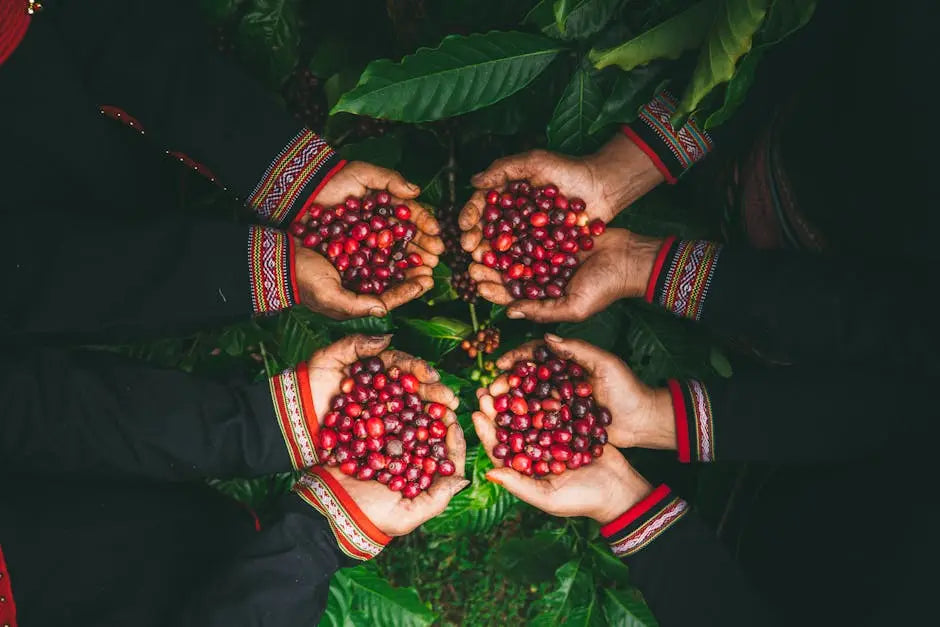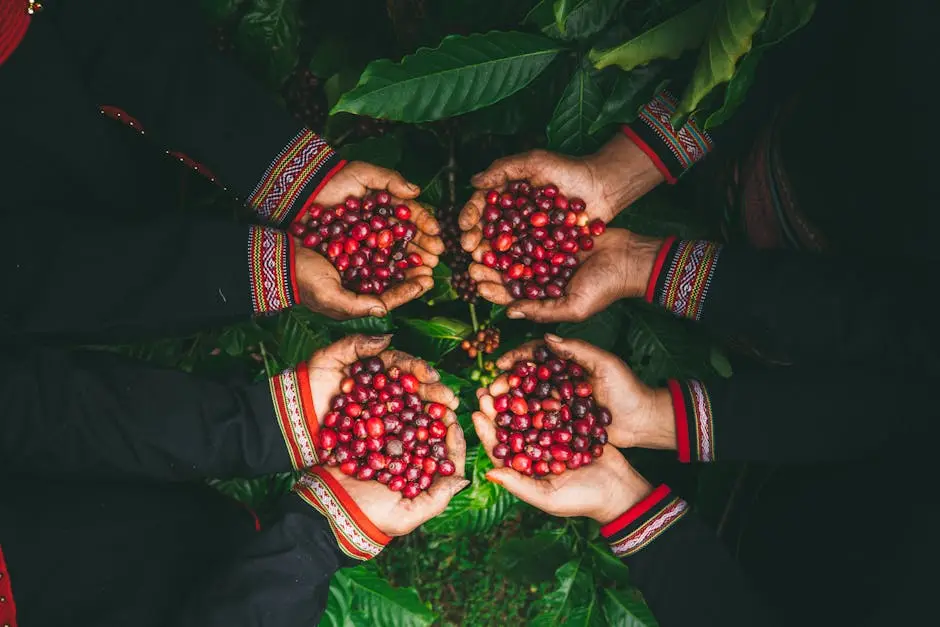Artisan Coffee Origins: A Journey from Bean to Cup

Join us as we explore the fascinating journey of artisan coffee, from the lush coffee farms to your favorite café. This post will take you through every step of the process, highlighting the passion and craftsmanship behind each delicious cup.
Exploring the Coffee Plant: A Brief Overview
Coffee plants thrive in specific climates and altitudes, producing beans with unique flavors based on their environment. Understanding the types of coffee plants is the first step in appreciating artisan coffee.
Did you know there are over a hundred types of coffee plants, but only two are primarily cultivated for commercial use? Coffea arabica and Coffea canephora (commonly known as robusta) each have distinct characteristics that affect the flavor and quality of the coffee. Arabica is often praised for its smoother, sweeter taste, while robusta showcases a bold, strong profile with higher caffeine content.
The environment plays an immense role in the flavor profile of the beans. Factors such as soil composition, altitude, and climate all contribute to the unique tasting notes found in each artisan coffee. For instance, beans grown at higher elevations tend to develop more complex flavors, making them a favorite among specialty coffee enthusiasts.
The Coffee-Farming Process: Cultivation to Harvest
Artisan coffee begins in the hands of dedicated farmers who cultivate the beans with care. From planting to harvesting, each step is crucial for producing high-quality coffee. The journey starts with thoughtful seed selection and careful planting, ensuring that each plant has the best chance to thrive.
Growing coffee is not just about sunlight and water; it requires a lot of hands-on work. Farmers often engage in manual labor, tending to the plants by pruning and checking for pests. They embrace sustainable practices that ensure the health of the soil and the environment, which is essential for the longevity of coffee growing.
As the coffee cherries ripen, timing becomes critical. Farmers must carefully monitor the cherries, as only the ripe ones, typically a deep red color, should be harvested for artisan coffee. This selective process is labor-intensive yet vital for capturing the best flavors and ensuring quality, differentiating artisan coffee from mass-produced varieties.
After harvesting, the cherries are immediately transported to processing facilities where they undergo further quality control. Here, farmers sort through the cherries, tossing aside any that are underdeveloped or damaged. This insistence on quality serves as a hallmark of artisan coffee.
Processing Coffee Beans: Methods Explained
After harvesting, coffee beans undergo various processing methods that significantly affect their flavor. We’ll explore wet and dry processing techniques and their impact on the final product. The most common method, wet processing, involves removing the cherry’s outer fruit and fermenting the beans to enhance their flavors.
In contrast, dry processing, also known as natural processing, allows the cherries to dry in the sun before the beans are extracted. This method often results in a fruity and complex flavor profile, showcasing the natural sweetness of the coffee. Each method has its advocates and contributes to the art of coffee preparation.
It’s fascinating how the chosen processing method can transform the final cup. For instance, wet-processed coffees often have a clean, bright acidity, while dry-processed coffees may exhibit deeper, richer sweetness. Understanding these nuances allows coffee lovers to appreciate the complexity that goes into their brew.
Roasting Coffee: The Art of Flavor Development
Roasting transforms green coffee beans into the aromatic beans we love. Discover the intricacies of roasting, including different roast levels and how they influence taste. The roasting process is a delicate balancing act of temperature and time, where flavor compounds are transformed and developed.
Light roasts are known for retaining the original flavors of the beans, often highlighting floral or fruity notes. As the roast darkens, however, those original flavors give way to deeper, more robust flavors characteristic of medium and dark roasts. Coffee enthusiasts often have a preference, with some swearing by the brightness of a light roast and others gravitating toward the boldness of a dark roast.
The roast level also affects caffeine content; surprisingly, lighter roasts contain slightly more caffeine than their darker counterparts. This is due to the fact that darker roasting causes beans to lose some of this energizing compound. Understanding these nuances can help you make more informed choices based on your desired taste and buzz!
Brewing Methods: From Pour Over to Espresso
Once roasted, it’s time to brew! Learn about various brewing methods, their unique characteristics, and how to choose the right one for your artisan coffee experience. From classic methods like French press and pour over to high-tech options like espresso machines, each technique brings out different flavors and qualities in the coffee.
The pour-over method, for instance, is favored for its ability to showcase the intricate flavors of artisan coffee. By controlling the flow rate of hot water over the grounds, coffee enthusiasts can extract a rich, nuanced flavor profile. Similarly, espresso brewing pressures water through finely-ground coffee, creating a concentrated shot that’s rich and bold.
Other methods, such as cold brew or siphon brewing, deliver entirely different coffee experiences. Cold brew, known for its smooth and mellow flavor, has surged in popularity, providing a refreshing alternative, especially in warmer months. Overall, the brewing method you choose can significantly enhance your experience of artisan coffee.
Savoring Artisan Coffee: Tasting Notes and Pairings
Artisan coffee offers a spectrum of flavors. We’ll delve into how to taste coffee like a professional and suggest delicious food pairings that enhance your coffee experience. Tasting coffee starts with just a few simple steps: grind the beans, smell the brew, then take that first, deliberate sip. Everyone’s palate is unique, so don’t hesitate to explore what you enjoy.
When it comes to tasting notes, be on the lookout for hints like chocolate, caramel, citrus, or floral notes. Many artisan coffees are crafted to showcase specific flavors that reflect their origins. Pairing coffee with food can also elevate your tasting experience; for example, a bright Ethiopian coffee pairs wonderfully with light pastries or fruits, whereas a rich, dark roast goes beautifully with chocolate desserts.
The world of artisan coffee is as diverse as the cultures that produce it. Each cup tells a story, sharing a piece of its origin with you. So, the next time you sit down for coffee, take a moment to consider the flavors and aromas that enrich this beloved beverage.
The Journey Worth Savoring
Understanding the origins of artisan coffee enhances our appreciation of this beloved beverage. Next time you sip your coffee, remember the journey it took to reach your cup and the artisans who made it possible.






